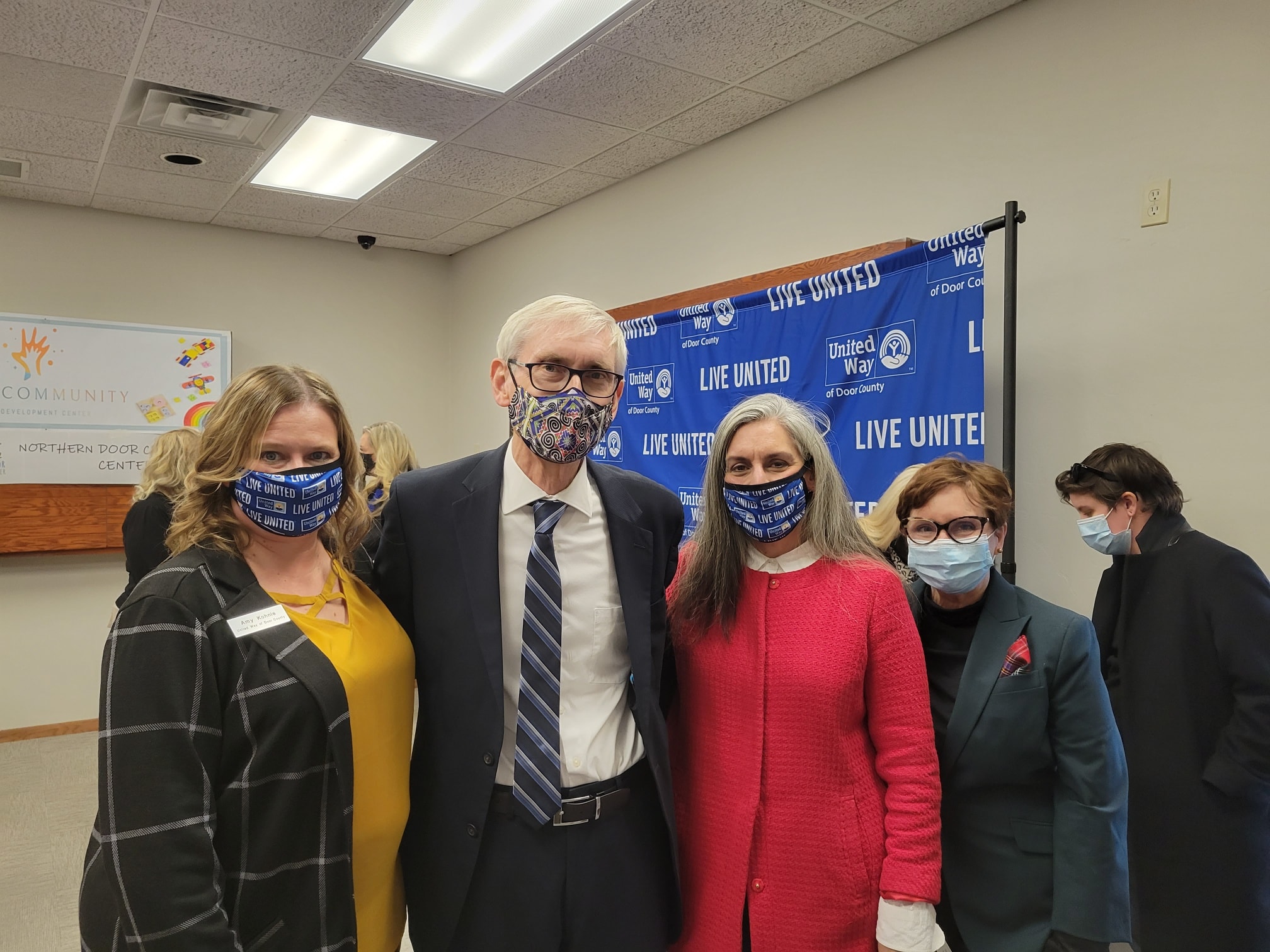The $3.5 million state grant awarded this month to United Way of Door County will allow Door County child care centers to explore new possible revenue streams, provide more options for parents and stabilize their business models over the long term, United Way leaders said last week.
The grant, announced Dec. 14 by Gov. Tony Evers, the Wisconsin Economic Development Corporation and the state Department of Workforce Development, comes as United Way has made child care in Door County a focus over the past two years.
United Way held community conversations about child care and identified issues such as affordability for parents, a lack of options for families who need child care outside traditional hours, difficulty attracting child care workers, and waiting lists at child care centers due to limited capacity.
United Way’s work also highlighted concerns about the effects a lack of child care options is having on the stability of the county’s workforce overall.
The grant directly addresses some of those issues, said United Way executive director Amy Kohnle and community impact coordinator Christina Studebaker. Studebaker has led United Way’s child care efforts. (Disclosure: Kohnle is also a donor to Knock.)
United Way requested funding as part of the grant for:
- Construction of a new building for the Door Community Child Development Center (formerly the Barker Center) in Sturgeon Bay, which would allow it to serve more children and would include a commercial kitchen allowing the center to provide food programs and summer camps.
- Renovations at the Northern Door Children’s Center in Sister Bay, including the creation of a separate room for the center’s 4K pilot program starting next fall, a partnership with the Gibraltar Area School District.
- The Door County Housing Partnership, a nonprofit organization working to build affordable homes, subsidize their purchase by working families and guarantee that the homes stay in the hands of working families throughout the life of the home. Some of the homes the Housing Partnership builds will be reserved for early childhood educators, Studebaker said.
- An affordable housing project led by Paula Anschutz, who is working to repurpose cabins from the Little Sister Resort property. United Way requested funding as part of the grant to help with foundations and plumbing and electrical hookups for the cabins after they’re moved to their new location, Studebaker said, and some of the cabins will be reserved for child care workers.
- Part of the salary of a new United Way staff position to oversee the above work and other child care efforts.
Funding for the grant comes from the federal American Rescue Plan, Kohnle said. As a result, she said, some of the money must be spent by December 2022, while the remainder must be spent by December 2024.
United Way still is awaiting final paperwork from the state, which could change the amounts of funding for different projects, Kohnle said.
Exploring new revenue streams
Child care centers in recent years have faced a central challenge to their business model as a result of the rise of kindergarten and 4K programs.
Traditionally, child care centers have provided care for children ages 0-5 during the day on weekdays, Studebaker said. Regulations dictate child care centers’ staff-to-child ratios, and centers must employ more staff members for younger children as compared to older children.
“Everyone has always lost money on the youngest kids, but you were making money on the older kids,” Studebaker said. “Everyone just knew that’s how you make it work, and that was fine.”
“When you lose the 5-year-olds and lose the 4-year-olds, this really throws this economic model into some stress,” she added.
Now, Kohnle said, unless child care centers dramatically increase their rates — which already are difficult for many parents to afford — they have to find new revenue streams.
The grant unlocks those options through the construction of new or renovated facilities, Studebaker said. United Way and the child care centers have discussed possibilities including evening and weekend child care and summer camps, she said – models that would allow the centers to still provide care for older children, as well.
“What we’re saying is maybe it’s not a done deal,” Studebaker said about centers losing the older children. “Those kids still need care at other times.”
Studebaker said United Way also has had conversations about a model in which employers would contribute to the cost of their employees’ child care. That idea is less developed, she said, but it could become more important over the next few years as some of the county’s employers see their workforces age and retire.
“We are cognizant that there are some industries here whose workforces may dramatically change – they have a lot of older employees,” Studebaker said. The county’s manufacturers are one example of that, she said.
United Way’s hope, Studebaker said, is that new revenue streams will allow child care centers to increase wages and thereby attract more workers.
Kohnle said United Way hopes the new models will lead to decreased tuition, as well.
“If we can stabilize that workforce, pay those educators what they should be getting paid with the benefits, but also reduce that burden on parents, that’s a win-win,” Kohnle said.

